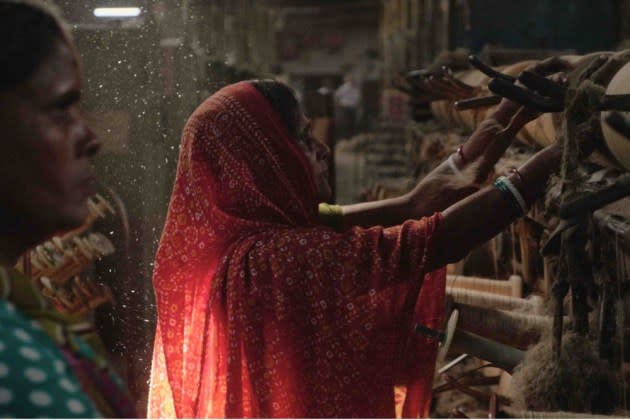Indian Documentaries Ride Global Wave as Local Funding and Distribution Concerns Remain

Far from the bright lights of Bollywood, the indomitable Indian documentary filmmaking industry has been making waves globally.
The recent past has several examples of India’s international success. In 2021, Payal Kapadia’s “A Night of Knowing Nothing” won the Cannes documentary award, while Rintu Thomas and Sushmit Ghosh’s “Writing With Fire” won Sundance and was Oscar nominated. In 2022, Kartiki Gonsalves’ “The Elephant Whisperers” won the documentary short Oscar; Shaunak Sen’s “All That Breathes” won both the Sundance and Cannes documentary awards and scored an Oscar nomination, in addition to a plethora of other wins; and Vinay Shukla’s “While We Watched” won awards at Toronto and Busan.
More from Variety
In 2023, Sarvnik Kaur’s “Against the Tide” won a special jury award at Sundance and in 2024, Park City continued to be a happy hunting ground for India with a win for Anirban Dutta and Anupama Srinivasan’s “Nocturnes.” 2024 has continued to bring cheer for India, with Nishtha Jain, whose “The Golden Thread” won at Bergamo in 2022, winning the top international prize at Hot Docs for “Farming the Revolution” and “While We Watched” winning the Peabody award for documentary.
Documentaries then, are serious business. Acknowledging this, India’s documentary, short fiction and animation-focused Mumbai International Film Festival (MIFF), is launching the inaugural Doc Film Bazaar project market this year. There are plenty of opportunities in the Indian documentary arena. Anita Horam of London and Mumbai-based collective The Mighty Muse that serves as a curator, connector and incubator in the field, says that India has announced itself to the world “with a unique self-expression unlike ever before.” “We have a limitless pool of hyper local true stories from and about India and its modern identity, which can be harnessed into authentic, timely, important and uplifting content,” Horam adds.
Indo-Canadian documentary producer Mel D’Souza (“Finding Freedom”) tried in the early 2000s to secure funding to launch a documentary channel in India. He feels that the idea was ahead of its time. “The big difference today, is that there are a number of content platforms that offer docs and with persistent and belief in what they can do, Indian filmmakers have been finding some support to create their doc projects,” D’Souza told Variety. “Most of that support is still coming from outside India but I believe that will change as more and more Indian docs and filmmakers are being recognized for their work.”
Miriam Chandy Menacherry, whose “From the Shadows” is at MIFF’s national competition this year, says that many fiction producers and production houses are now willing to discuss financing documentaries and that when she screens her work at film schools, she sees several young filmmakers embracing documentaries as their chosen form of storytelling. Her compatriot Sreemoyee Singh, whose “And, Towards Happy Alleys” debuted at the Berlinale and is also in MIFF’s national competition, says that a lot of Indian filmmakers are constantly experimenting and doing things in ways that have not been done before. They also have awareness of how international markets function, understand which places to tap in for funding, and understand the logic of co-productions, pitching forums, acquisitions and mentorship opportunities.
Menacherry, Singh and Jain, whose “The Golden Thread” is at MIFF’s international competition, single out incubator and pitching forum DocedgeKolkata for opening up the international market for co-productions.
The main challenges facing the sector are local funding and distribution. Jain says that Indian documentaries face a funding drought with no domestic support and dwindling state funds. Filmmakers rely on competitive international funds, often favoring urban, English-speaking creators. Distribution is another hurdle, with no sales agents, TV channels, or festivals offering screening fees. And, major streaming platforms “shy away” Indian documentaries, especially political ones, Jain adds.
“Until Indian docs are supported by funding from India, the growth of the sector will lag,” says D’Souza. “The other challenge, as of just a few weeks ago, was that there was a lot of censorship playing a part in what stories could be told freely and boldly in some cases. This may be changing but it’s still a case of wait and see.”
Local theatrical distribution has worked in the past with both Menacherry’s “The Rat Race” (2011) and Shukla and Khushboo Ranka’s “An Insignificant Man” (2016) releasing successfully. That is no longer the case. Horam describes the lack of distribution as a “massive gap.” “Ironically it often takes some hard won recognition from the West for it to even have a fighting chance to be seen in India,” Horam says.
The battle for local distribution needs to start with the basics, Indian filmmakers say. “Documentaries have yet to find a paying audience. We have to start from the ground up – build a documentary audience in schools and colleges for a real documentary movement to begin,” says Jain.
“While our films thrive globally, how do we make them reach local audiences? The goal is to make our films reach our people through channels of distribution that are available to them. Only then can we truly grow stronger as a community rooted locally, but with an international reach,” adds Singh.
As for the gap in local funding, it is one of the issues that the Doc Film Bazaar aims to address.
Best of Variety
Sign up for Variety’s Newsletter. For the latest news, follow us on Facebook, Twitter, and Instagram.

 Yahoo News
Yahoo News 